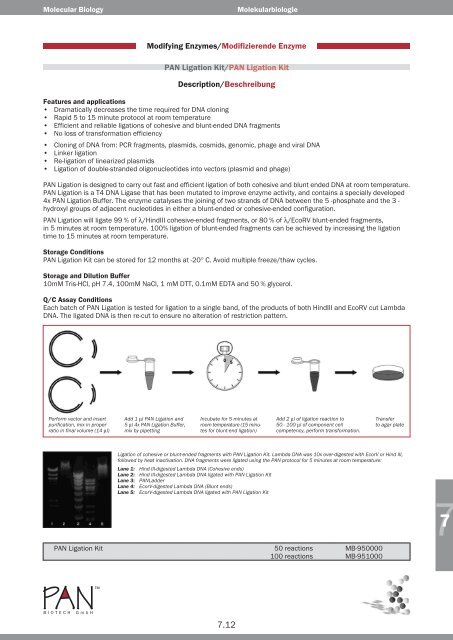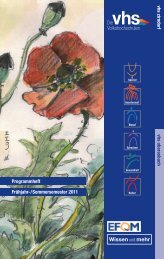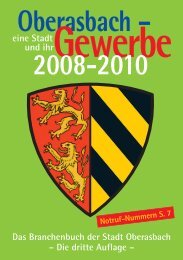Der NEUE Katalog ist da! - PRO PUBLIC GmbH
Der NEUE Katalog ist da! - PRO PUBLIC GmbH
Der NEUE Katalog ist da! - PRO PUBLIC GmbH
Create successful ePaper yourself
Turn your PDF publications into a flip-book with our unique Google optimized e-Paper software.
Molecular Biology<br />
BIOTECH <strong>GmbH</strong><br />
<br />
7.12<br />
Molekularbiologie<br />
Features and applications<br />
• Dramatically decreases the time required for DNA cloning<br />
• Rapid 5 to 15 minute protocol at room temperature<br />
• Efficient and reliable ligations of cohesive and blunt-ended DNA fragments<br />
• No loss of transformation efficiency<br />
• Cloning of DNA from: PCR fragments, plasmids, cosmids, genomic, phage and viral DNA<br />
• Linker ligation<br />
• Re-ligation of linearized plasmids<br />
• Ligation of double-stranded oligonucleotides into vectors (plasmid and phage)<br />
PAN Ligation is designed to carry out fast and efficient ligation of both cohesive and blunt ended DNA at room temperature.<br />
PAN Ligation is a T4 DNA Ligase that has been mutated to improve enzyme activity, and contains a specially developed<br />
4x PAN Ligation Buffer. The enzyme catalyses the joining of two strands of DNA between the 5 -phosphate and the 3 -<br />
hydroxyl groups of adjacent nucleotides in either a blunt-ended or cohesive-ended configuration.<br />
PAN Ligation will ligate 99 % of λ/HindIII cohesive-ended fragments, or 80 % of λ/EcoRV blunt-ended fragments,<br />
in 5 minutes at room temperature. 100% ligation of blunt-ended fragments can be achieved by increasing the ligation<br />
time to 15 minutes at room temperature.<br />
Storage Conditions<br />
PAN Ligation Kit can be stored for 12 months at -20° C. Avoid multiple freeze/thaw cycles.<br />
Storage and Dilution Buffer<br />
10mM Tris-HCl, pH 7.4, 100mM NaCl, 1 mM DTT, 0.1mM EDTA and 50 % glycerol.<br />
Q/C Assay Conditions<br />
Each batch of PAN Ligation is tested for ligation to a single band, of the products of both HindIII and EcoRV cut Lamb<strong>da</strong><br />
DNA. The ligated DNA is then re-cut to ensure no alteration of restriction pattern.<br />
Perform vector and insert<br />
purification, mix in proper<br />
ratio in final volume (14 μl)<br />
Modifying Enzymes/Modifizierende Enzyme<br />
Add 1 μl PAN Ligation and<br />
5 μl 4x PAN Ligation Buffer,<br />
mix by pipetting<br />
PAN Ligation Kit/PAN Ligation Kit<br />
Description/Beschreibung<br />
Incubate for 5 minutes at<br />
room temperature (15 minutes<br />
for blunt-end ligation)<br />
Add 2 μl of ligation reaction to<br />
50 - 100 μl of component cell<br />
competency, perform transformation.<br />
PAN Ligation Kit 50 reactions MB-950000<br />
100 reactions MB-951000<br />
Transfer<br />
to agar plate<br />
Ligation of cohesive or blunt-ended fragments with PAN Ligation Kit. Lamb<strong>da</strong> DNA was 10x over-digested with EcorV or Hind III,<br />
followed by heat inactivation. DNA fragments were ligated using the PAN protocol for 5 minutes at room temperature:<br />
Lane 1: Hind III-digested Lamb<strong>da</strong> DNA (Cohesive ends)<br />
Lane 2: Hind III-digested Lamb<strong>da</strong> DNA ligated with PAN Ligation Kit<br />
Lane 3: PANLadder<br />
Lane 4: EcorV-digested Lamb<strong>da</strong> DNA (Blunt ends)<br />
Lane 5: EcorV-digested Lamb<strong>da</strong> DNA ligated with PAN Ligation Kit<br />
7





